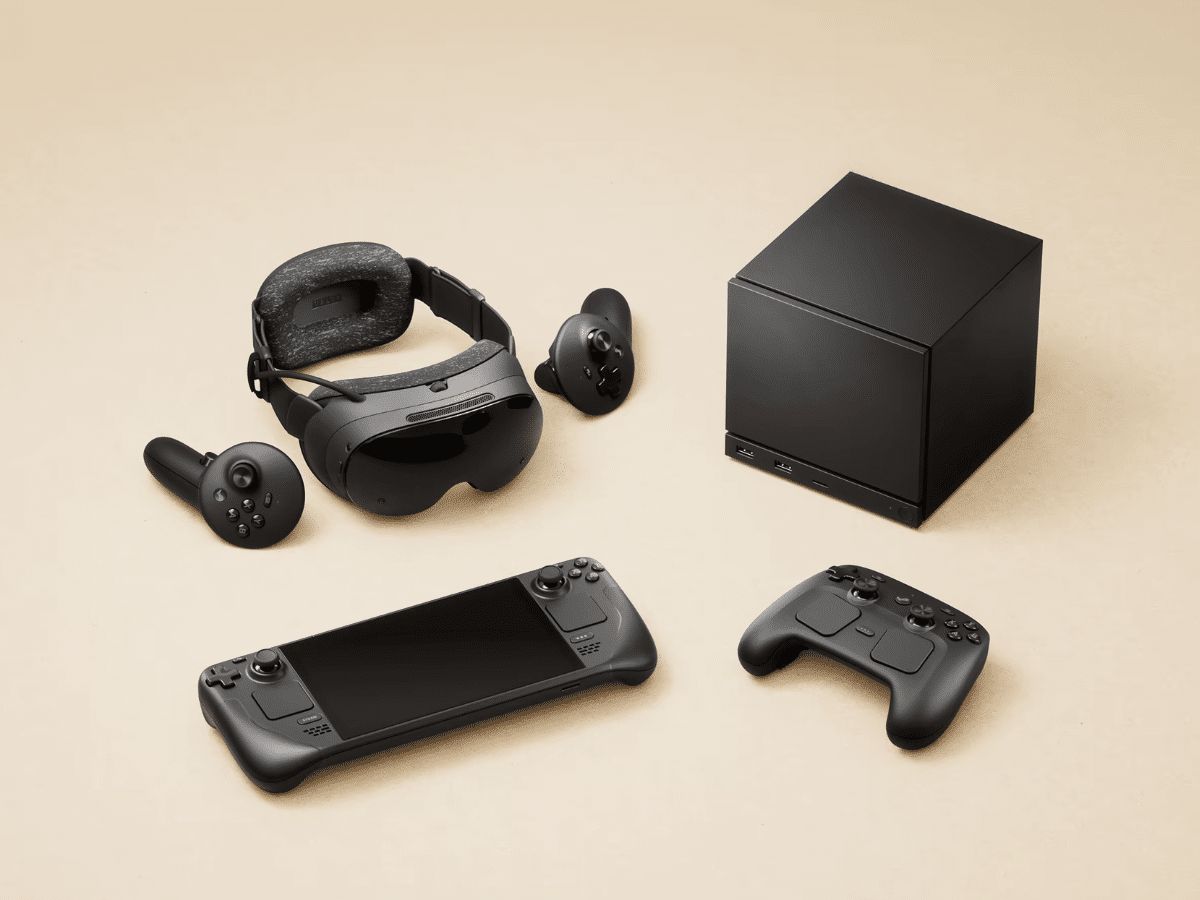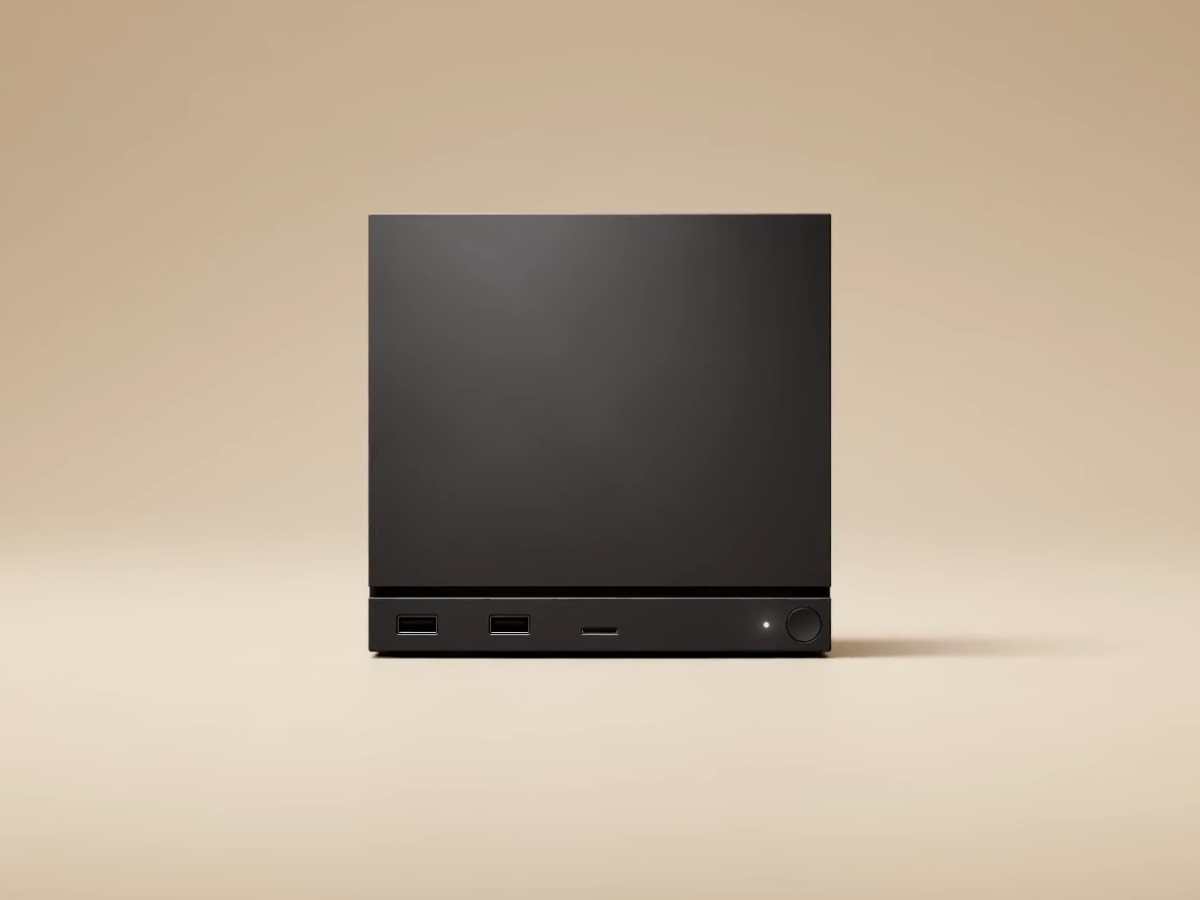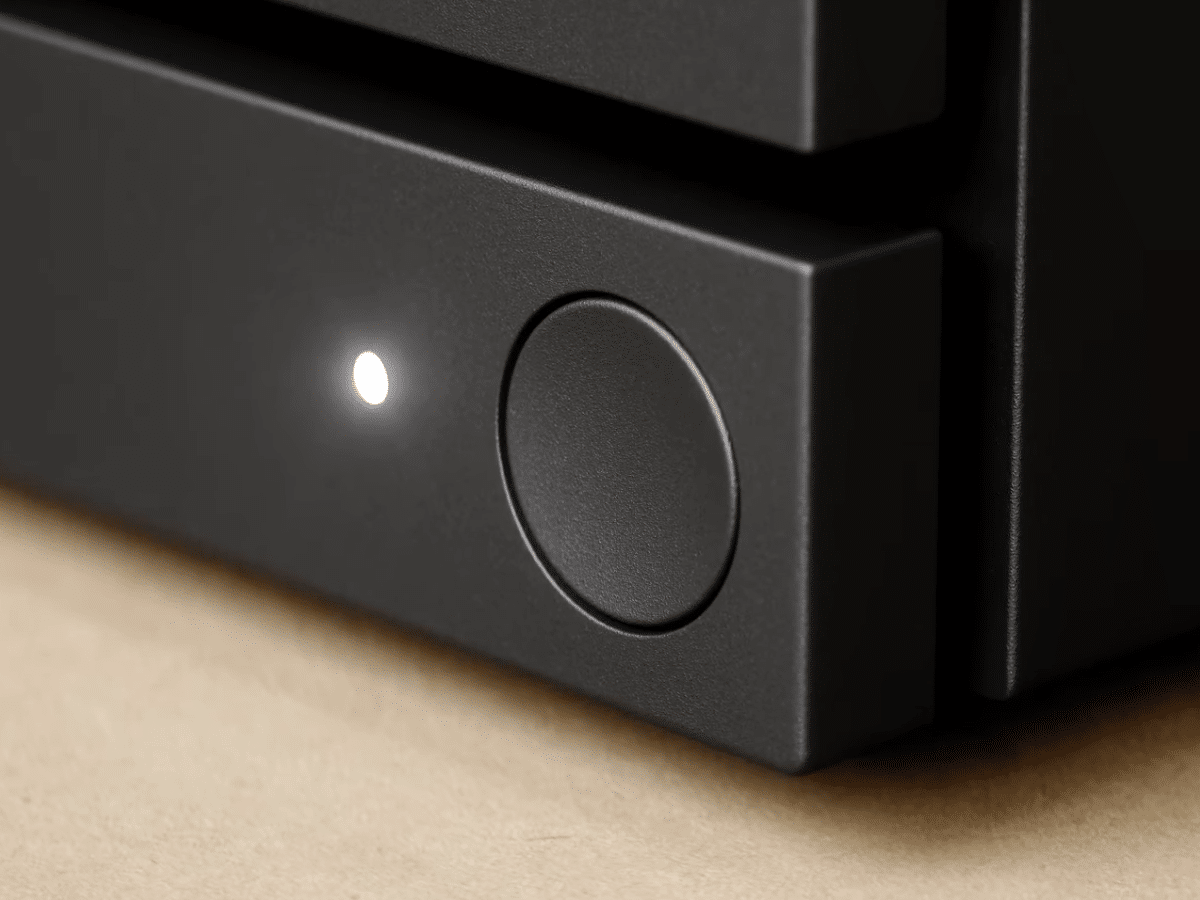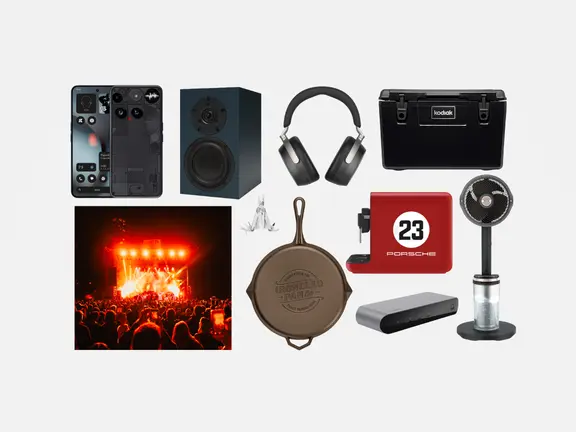
Published: Last Updated:
Readtime: 10 min
Every product is carefully selected by our editors and experts. If you buy from a link, we may earn a commission. Learn more. For more information on how we test products, click here.
I’m going to save you an in-depth history lesson: about a decade ago, Valve tried to launch its own line of gaming PCs—working with partners to provide hardware while it aimed to provide a Linux-based software platform—called ‘Steam Machines’. It didn’t work out.
Now, though, Valve has a working software solution in SteamOS (the software that underpins the fantastic Steam Deck), and the knowledge and means to build its own hardware. So, it’s trying again.
The Steam Machine, as Valve is calling it, is a small-form-factor pre-built PC running SteamOS (built on the open-source Linux, rather than Windows or MacOS), and will be available to buy in “early 2026”. Valve did show off quite a bit of info about the Steam Machine, but it left some important details out: a specific release date, and how much it’ll cost.

What we do know, though, is that the Steam Machine will be able to play most modern games at 4K resolutions at 60 frames-per-second using upscaling technology (as well as natively at lower resolutions), it runs at a significantly lower voltage than a traditional gaming tower, and it’ll bring a lot of the best features of the Steam Deck to a more powerful device.
It’ll also launch in Australia day-and-date with the rest of the world—we won’t be waiting an additional two years like we did with the Deck—alongside a revamped Steam Controller, and its latest VR offering, the Steam Frame (both seen above).
Like many of my fellow nerds, I’m really excited to see what Valve brings to the hardware space, and I’m hoping the Steam Machine will bridge the gap between PCs and consoles in the same way the Steam Deck did with PCs and handhelds. We’ll have to wait a little bit more before we see where it lands, so here’s what we know about the Steam Machine so far:

Tech Specs
| Valve’s ‘Steam Machine‘ | Confirmed Specifications |
| Price | TBA |
| OS | SteamOS (Linux) |
| Internals | – AMD Zen 4 CPU (4.8GHz, 6 cores) – AMD RDNA 3 (2.45GHz, 8 GB DDR6 VRAM) – 16GB DDR5 RAM |
| Ports | – 4x USB-A Ports – 1x USB-C 3.2 Gen 2 – DisplayPort 1.4 (up to 4K 240Hz, 8K 60Hz) – HDMI 2.0 (up to 4K 120Hz) – Gigabit Ethernet – SD Card Reader |
| Storage | – 512GB or 2TB M.2 Storage – Can be upgraded by user |
| Dimensions | – 156mm x 152mm x 162mm – 2.6 kg |
| Other | – Replaceable front cover |

Is it a Gaming PC? Or a Gaming Console?
It’s worth noting that while Valve is very much positioning the Steam Machine as a gaming PC, it’s also skirting the line into console territory.
According to Valve, you should be able to plug the box into your TV, projector, monitor, or whatever you’re using and get running quickly and seamlessly. It’ll have sleep-to-wake functionality with the new Steam Controller, which is something PC gaming has traditionally struggled with, meaning you can easily jump back into a game on your TV when you get home from work.
Plus, with how well SteamOS simply works as a full-screen gaming OS, rather than a more traditional Windows-like environment (which is very cumbersome to navigate using a gaming controller), it’ll be very well suited to a home theatre-like role—plugged directly into your TV, rather than sequestered away on a desk.
Assuming it all works as it should, the Steam Machine could be a great bridge between those who want the freedom of PC gaming without giving up the comfort of a living-room console, and given my months of Steam Deck use, I can say that a lot of these things already work pretty well: the biggest problem I tend to hit with the Deck is that it’ll run out of battery while asleep, which shouldn’t be an issue for a device that is perennially plugged in.
It’s also worth noting that one of the other ways it eschews closer to consoles is in the Steam Machine’s virtual inability to be upgraded.
It should be pretty simple to swap out the device’s storage, but here you effectively get what you pay for. You’re not going to be tossing in a new GPU once performance starts lagging as you could with a more traditional desktop PC, and without a Thunderbolt/USB-4 capable port the Steam Machine can’t function with an external GPU.
Instead, Valve is banking that a lot of people will be comfortable gaming without cutting-edge hardware, but with the added software customisability of a PC—and, based on Steam’s monthly hardware surveys, its probably spot on. Plus, there are plenty of people without the patience to tinker with hardware but who still would prefer to game on Steam than a console.

Who’s the Steam Machine For?
It’s worth stating here that if you’re someone who already has a high-end gaming PC capable of hitting 4K on ultra with respectable frame rates, it’s unlikely you’ll get a lot out of a Steam Machine aside from a potentially cheap living room box to stream games to. You could, instead, simply install a similar Linux-based OS (such as Bazzite) and make your own Steam Machine.
If you’ve been looking to get into PC gaming on a budget: the jury is still out, but this one could be an answer to that problem.
If you’re coming from a console, though, there’s quite a bit to talk about.
Valve says the Steam Machine lands somewhere around six times the power of a Steam Deck—which sounds like a massive jump, but actually puts it pretty close to today’s entry-level console architectures. The technically-minded folk at Digital Foundry believe the capabilities on show here theoretically put the Steam Machine between the Xbox Series S and the base PlayStation 5.
These would be very respectable benchmarks to hit, though we still don’t know anything about how it’ll compare on pricing.
The Steam Deck is still one of the cheapest PC handhelds on the market, thanks to the fact that it natively runs SteamOS, and Valve takes a cut of every game sold on the Steam store—the de facto gaming store on PC. Getting the device into your hands cheaper means more games sold on Steam, which means more money for Valve in the long run.
It doesn’t seem like that’s the approach Valve will be taking with the Steam Machine, though. They’ve now stated the Steam Machine won’t be priced like a console, but rather a mid-range PC, so you can probably expect it to land north of AU$1,000.
Similarly to modern consoles, the Steam Machine will rely on upscaling technology to hit its quoted “4K 60fps” capability. However, if you’re happy playing games at 1080p, or even 1440p for certain titles, the Steam Machine should function well even without any kind of upscaling.
Additionally, it costs nothing to play online games through Steam. Comparatively, it costs AU$30 a year to jump in on Nintendo’s cheapest membership tier, AU$102.95 for a year of PlayStation Plus ‘Essential’, and AU$155.40 on Xbox’s Game Pass ‘Essential’ tier (paid at AU$12.95 monthly).
You do get a lot more value in some of these memberships beyond just playing online (free games, discounts, game streaming, etc), so it isn’t exactly a fair comparison—but if you don’t want any of those things, and just want to play games you buy online with friends this could be an attractive way to get there.

Are There Any Red Flags?
It can’t all be good though—the included SD Card Reader should make transferring games between your Steam Deck and Steam Machine a breeze, but actually playing those games off an SD card isn’t going to be a great experience. You’ll likely still want to transfer games onto local storage to keep read times quick—especially if you’re playing something competitive.
As with the Steam Deck, which launched with underpowered capabilities, the Steam Machine isn’t going to be leading the pack graphics-wise—even among other mini PCs.
While RDNA 3 graphics are good, RDNA 4 is already a thing and there are far more powerful pre-built mini PCs on the market: though it’s worth noting they’re all quite expensive as a result. If Valve is trying to keep the device affordable and small, while still performant, as it says it is, keeping some costs in check is inevitable.
Then there’s the issue of Linux.
While Windows and MacOS are pretty well-embedded into our lives at this point, Linux is a bit tricky to get started with. Yes, SteamOS is a pared back, simple version of the OS, but if you’re reliant on specialised software to do your job there’s a large chance Linux won’t fit your needs (unless you’re willing to get very, very in the weeds to make it work).
If you only use your PC for gaming, streaming content, and browsing the web, you’ll be completely fine—though there will still be a learning curve.
Beyond that, even gaming can get tricky on Linux. Valve has made huge strides in this space in the past decade with its Proton translation layer, which I’m not going to go into at all (this story is long enough already), but many newer games require a type of anti-cheat that Linux itself does not support.
‘Kernel-level’ anti-cheat effectively embeds itself into the deepest depths of your PC’s software with the aim of keeping an eagle-eye on whether or not you’re cheating in online matches, though it also appears in single-player games from time to time. Game developers swear this level of visibility is necessary to keep hacking in their games under control, but many people see this as complete overkill and an invasion of their privacy. It’s a thorny issue that, again, I don’t have time to get into here.
The result is that many modern games, such as Battlefield 6, will not run on the Steam Machine without some tweaking from the developers—and few developers will bother unless there is a large contingent of players flocking to Linux to make it worth their while.
That may not be a big deal to veteran PC players who know enough about this issue to go in with the knowledge needed, but if someone is buying their first gaming PC only to find out that their favourite game simply won’t run after already dropping an unspecified amount of money on the hardware—that’ll be a kick in the teeth.
Then, there’s still the big unknown: the price point. Valve’s recent comments make it feel more likely that the Steam Machine will be priced higher than people initially anticipated, which could drive quite a few people off. In saying that—there’s literally no way for us to know until Valve decides to tell us, and we shouldn’t be waiting too much longer for some confirmation.
What do you think? Are you interested in a new player entering the console wars? Are you interested in jumping into PC gaming, but haven’t wanted to deal with the hassle? Are you interested in a small-format PC? Let us know in the comments below!


































Comments
We love hearing from you. or to leave a comment.